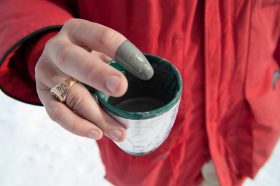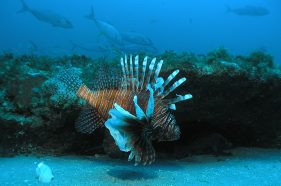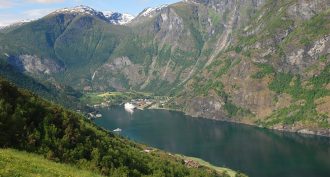Earth
-
 Earth
EarthWorld’s biggest volcano is hiding under the sea
Tamu Massif is currently sleeping with the fishes some 2 kilometers (1.2 miles) below the surface of the Pacific Ocean.
By Janet Raloff -
 Microbes
MicrobesMystery microbes of the sea
Biologists find archaea a true curiosity. They make up one of life’s three main branches. The two better known branches are bacteria and eukaryotes (u KARE ee oatz). That last branch includes animals, plants and fungi. But archaea have remained mysterious. Very little is known about them. In fact, their unique status wasn’t even recognized until relatively recently, in 1977.
By Douglas Fox -
 Animals
AnimalsAlien carp leap onto the scene
Last summer, Alison Coulter got a big surprise as she piloted a boat along the Wabash River in Indiana. Startled by her boat’s motor, a 60-centimeter (24-inch) carp leaped out of the river. In some cases, jumping Asian carp have broken a boater’s nose, jaw or arm.
By Roberta Kwok -
 Animals
AnimalsMud worth more than gold
Reed Scherer and Ross Powell have studied mud from all over the world. It is different in each place. Mud from the Sulu Sea near Borneo is as smooth as cream cheese. Mud from Chesapeake Bay, in the mid-Atlantic United States, clings to your skin like peanut butter.
By Douglas Fox -
 Earth
EarthExplainer: Ice sheets and glaciers
Ice sheets and glaciers give scientists clues about climate change.
By Douglas Fox -
 Earth
EarthExplainer: Antarctica, land of lakes
There are many, although they tend to be buried under rivers of ice.
By Douglas Fox -
 Environment
EnvironmentUnconventional spill
An accidental spill of extra-heavy crude oil points to some unusual challenges in safely getting this petroleum to market.
-
 Environment
EnvironmentExplainer: All crude oil is not alike
Crude oil comes in conventional and unconventional types.
By Janet Raloff -
 Animals
AnimalsGorgeous eco-bullies
‘Foreign’ lionfish — aquarium castoffs — have been invading American coastal waters at an alarming rate and gobbling up the natives.
By Janet Raloff -
 Climate
ClimateClimate change: The long reach
Scientists who study the environment to better gauge Earth’s future climate now argue that current changes may not reverse for a very long time.
-
 Tech
TechExplainer: What is fracking?
Energy companies have found new use for hydraulic fracturing to extract natural gas from shale rock.
By Erica Gies -
 Earth
EarthQuakes cause faraway sloshing
Right after a magnitude-9 quake in Japan, scientists knew that its tremors had set distant waters in northern Europe sloshing. Now they know how.
By Sid Perkins